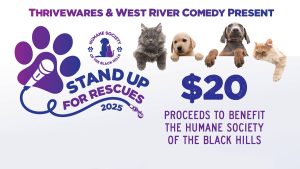RAPID CITY, SD – As we enter the heart of summer, gardens across the Black Hills are in full swing. After a late frost in early May and a slightly wetter-than-average June, many local gardeners are finally seeing their efforts bloom. Literally.
So, where should your garden be right now? And what can you do to keep it thriving through the rest of the season?
Growth Stage: Midpoint and Maintenance
By early July, most warm-season crops like tomatoes, peppers, cucumbers, and squash should be flowering or already producing fruit. Cool-weather vegetables such as lettuce and spinach may be winding down due to the heat. That is, unless they’re in a shaded area or have been succession planted. Root vegetables like carrots, onions, and beets should have good top growth and be maturing underground.
Perennial flowers and herbs should be full and healthy by now. Annuals are likely showing off vibrant blooms, especially if deadheaded regularly.
Tips to Get the Most Out of Your Garden Right Now:
1. Feed Your Plants:
This is a good time to add compost or a balanced fertilizer to support fruit production. Tomatoes especially benefit from calcium and potassium this time of year to prevent blossom end rot.
2. Water Deeply and Consistently:
With the hotter days ahead, focus on deep watering early in the morning to avoid evaporation and reduce stress on plants. Avoid watering leaves, which can lead to mildew or sun scorch.
3. Prune and Deadhead:
Remove dead flower heads from annuals to encourage more blooms. Prune tomato suckers and overcrowded stems from squash or cucumbers to improve airflow.
4. Check for Pests and Disease:
Watch for signs of powdery mildew, aphids, or hornworms. Regular inspection can prevent small problems from becoming big ones.
5. Plan for a Fall Harvest:
Now is the perfect time to start seeds indoors or in a shaded bed for a second crop of carrots, kale, lettuce, radishes, or even broccoli.
6. Mulch if You Haven’t:
Mulching helps retain moisture and control weeds, especially during dry stretches. Straw, grass clippings, or shredded leaves work well.
7. Keep Harvesting:
Pick vegetables like beans, cucumbers, and zucchini often to encourage continued production. Letting them overgrow tells the plant to stop producing.
Still Behind?
If your garden is lagging a bit due to a late start or unexpected weather, don’t worry. Many crops have a long growing window. You can still plant fast-growing vegetables like bush beans, radishes, and lettuce. You’ll be able to enjoy a harvest before fall. Just keep feeding and protecting your plants as we move into the hottest part of the season.
Whether you’re tending tomatoes in raised beds or a wild patch of pollinator-friendly blooms, now is the time to enjoy the beauty and bounty of your hard work. Keep checking, trimming, and watering. Your garden will thank you well into autumn.





